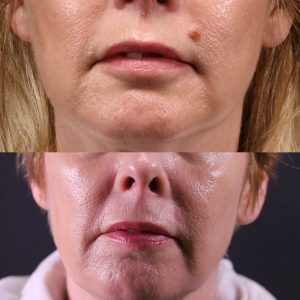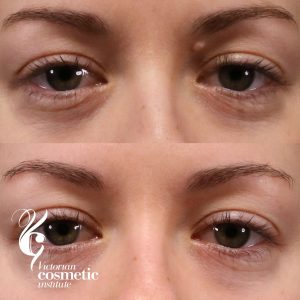What is radiofrequency surgery?
Radiofrequency surgery uses a band of wavelengths that can be used for skin surgery and mole removal. These high-frequency wavelengths generate minimal heat. The wavelength that is optimal for skin surgery is 4.0 megahertz (MHz), which is similar to the frequency of marine band radios. When channelled through an electrode tip, this wavelength can cut the skin and simultaneously coagulate blood to produce a bloodless incision. Also, as it generates minimal heat, surrounding tissues are unaffected.
Compared to the traditional method of skin excision with a scalpel, radiofrequency has many advantages when incising skin or removing skin lesions. Traditionally, skin incisions for surgery or skin lesion removal are done surgically with a scalpel. Incisions made this way tend to bleed and leave more scarring. The advantages of radiofrequency surgery include;
- No pressure is required to make an incision – i.e. it can be more precise
- Simultaneous blood coagulation whilst cutting
- Incisions are bacteria-free
- The scarring produced is usually less than scalpel incisions
- Safety is higher than using scalpels
- Enhanced healing, with less swelling, bleeding, pain, and infection afterwards in comparison to scalpel incisions
- It can shave-down skin lesions, so no stitches are required, and no scars are left.
- Cosmetically superior results to scalpel incisions
At Victorian Cosmetic Institute, we use the Ellman Pelleve to perform this treatment on moles.
What can radiofrequency be used for?
Radiofrequency can make skin incisions or remove lesions such as benign naevi (moles, mole removal), warts, seborrhoeic keratosis (benign skin lesion), and skin tags.
It helps remove benign skin lesions, as the skin lesion can be gradually shaved down until the skin level is reached.
What does radiofrequency skin lesion removal involve?
The first step is to consult with one of our doctors. They will assess whether the lesion is suitable for radiofrequency treatment.
A small amount of local anaesthetic is injected into the base of the lesion. The electrode tip is then brushed over the top of the lesion, removing it layer by layer.
Usually, no dressing is required after the treatment.
In most cases, the recovery time is approximately 7 to 10 days. During this time, the skin may appear slightly red.
Case Study – upper lip mole removal
This patient had a mole that was growing in size on her upper lip. Radiofrequency was used to shave this back to the skin level.

Case Study – radiofrequency removal of mole on eyelid

Radiofrequency was used to remove this mole under the patient’s left brow. The recovery period was approximately one week, and the photo after treatment was taken two months after the treatment.
Why choose The Victorian Cosmetic Institute as your provider of radiofrequency mole removal?
Our doctors are highly experienced and skilled in radiofrequency mole removal. As a result, we can recommend your suitability for treatment and provide the best treatment possible for you.
Our goals with your skin lesion removal to;
- Ensure your skin lesion is appropriate for treatment through careful assessment.
- Discuss the pros and cons of radiofrequency and traditional surgical excision with a scalpel.
- Cause as little discomfort with the procedure as possible.
- Produce the best cosmetic outcome possible.
Making that first phone call about any cosmetic procedure can be a confronting task – many of our patients have preferred filling out our online enquiry form. We can then contact you with an understanding of the results you are hopeful of achieving and ensure the treatment is appropriate.
Otherwise, you can phone us directly on 1300 863 824.